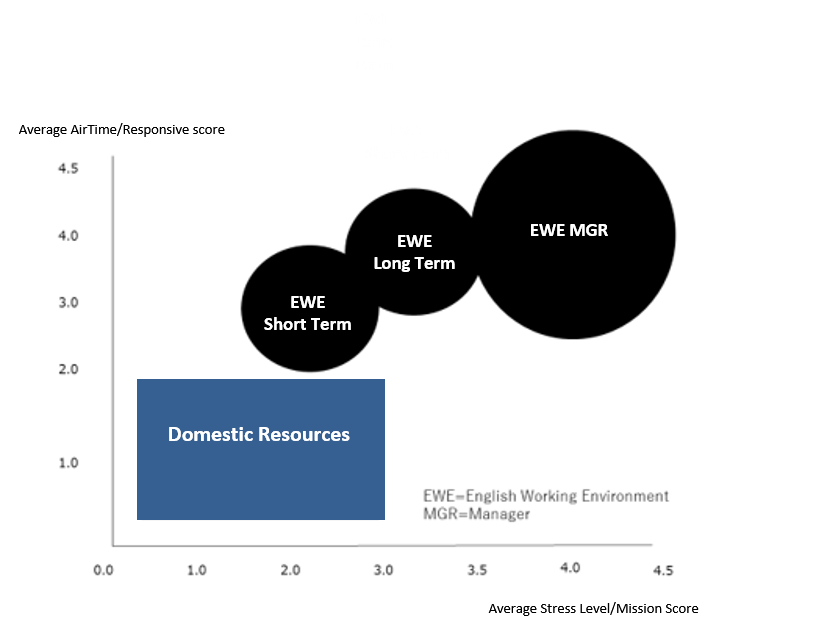Extracting individual data
P360 has 7 assessment items and the total score is the mean number of these 7 items. By extracting the scores of each of these 7 items and comparing them, we can work out an indicator to measure the candidate’s skill type, personality, career adequacy, overseas transfer potential and length of stay, training plan, leadership capability and career advancement (Human Resource Management Criteria).
(Data analysis is a separate service , however we provide consultation for our customers to carry out their own analysis.
For example, if we set ‘Airtime’(listening capability) on the vertical axis and ‘Stress Level’(acceptance of foreign culture) on the horizontal axis, we can use the cluster analysis method to categorize each candidate into 4 categories.
A:Listening capability is high but acceptance of foreign culture is low
B:Acceptance of foreign culture is high but listening capability is low
C:Listening capability and acceptance of foreign culture is both high
D:Listening capability is high but acceptance of foreign culture is both low
Candidate A can work overseas for a short period of time and will be effective if placed in a position that requires strong communication skills. However, regardless of their high English skills, if placed overseas for a long period of time, they may not necessarily show a high business performance. Candidate B may be able to improve their English skills after working overseas for 3 years, but may find it hard to negotiate deals or discuss detailed specifications, which is essential in management level.
Using individual data and our experience in skill analysis, we can measure different HRM criteria of each candidate. This can be used by the HR department for future reference when considering individual career advancement or producing performance evaluations.
